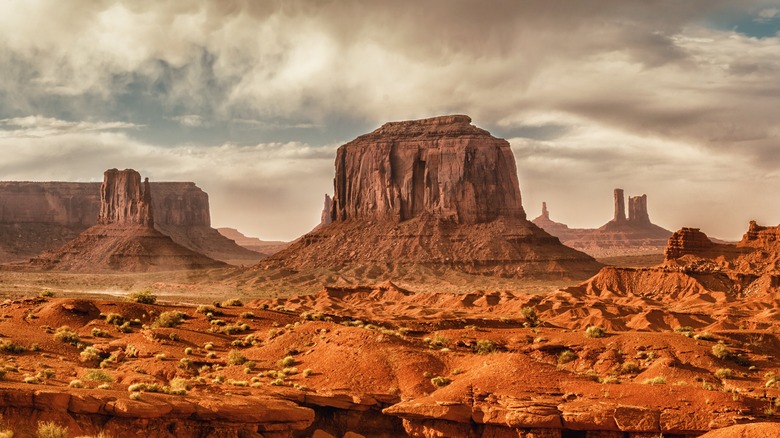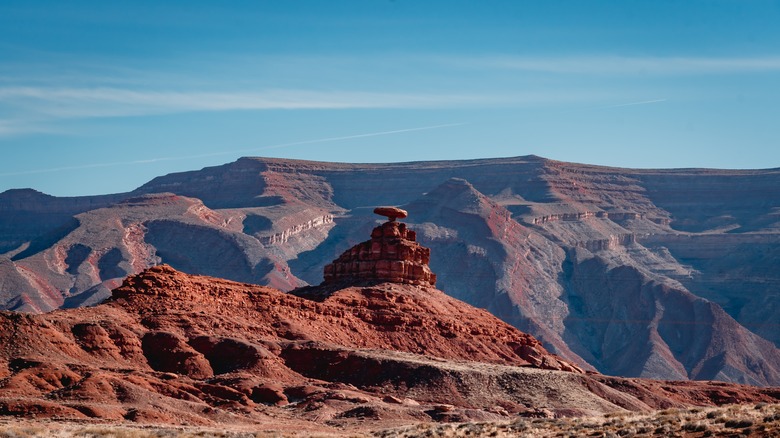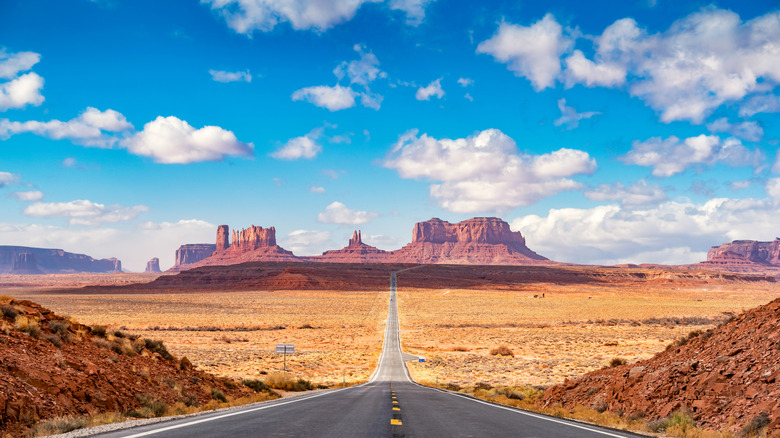Witness The Best Of The Southwest On A Road Trip Through The Most Iconic Red Rock Valleys
Venturing out on a road trip is one of the best ways to experience the American Southwest. The sprawling region is composed of Arizona and New Mexico, plus small portions of Colorado, Nevada, California, Texas, and Utah. It's almost impossible to see everything the territory has to offer in a single trip, but exploring by car lets you enjoy its iconic red rock valleys better than jumping from city to city on a plane. U.S. Route 163 is a prime example, as it's one of the most storied routes for road trips in the U.S. The long stretch of road rolls through Arizona and Utah, providing travelers with dramatic views of the surrounding desert.
U.S. Route 163 is a 64-mile highway that forms part of the historic Trail of the Ancients Scenic Byway. The entire Scenic Byway runs through multiple states, but the portion consisting of U.S. Route 163 will take you from the small town of Bluff, Utah to Kayenta, Arizona — where the highway connects to U.S. Route 160. There's plenty of history to delve into as you wind your way through some of the most picturesque valleys the arid Southwest has to offer, all from the comfort of your air-conditioned vehicle.
Enjoy the majestic Southwest from scenic Route 163
Driving the entirety of U.S. Route 163 will only take around two hours, although it could take longer depending on how often you stop to enjoy the views. Departing from Bluff, your first pitstop should be at the Entrance to Valley of the Gods Road. You'll leave behind the pavement and enter a gravel road that takes you to a small parking lot overlooking the magnificent Seven Sailors rock formation. This road continues for several miles and features a variety of prominent viewpoints.
Most visitors, however, will venture back to U.S. Route 163 and continue southwest to the town of Mexican Hat, where the landscape is almost as red as one of Utah's most impressive destinations, Capitol Reef National Park. No trip to the tiny town of Mexican Hat is complete without snapping a few pictures of its namesake — an improbable rock structure that resembles an inverted sombrero. It can be seen from the highway, though there's a gravel road leading up to it if you'd like to get closer.
You'll also find the nearby Goosenecks State Park worth a visit if you need to stretch your legs. Perched on the edge of a canyon formed by a winding river, it offers an incredible view of the various rock strata in the surrounding hills. If you want to see another natural wonder formed by the unstoppable will of water, you'll find one of the most photographed destinations in Arizona less than three hours west.
Make an extended stop at Monument Valley
The main attraction of U.S. Route 163 is the historic Monument Valley. Forrest Gump fans will remember it as the point where Forrest gets tired and decides to go home. The drive in is breathtaking, with monolithic structures bursting out of the desert as they soar skyward. The Tribal Park itself is home to a 17-mile loop that gives you panoramic views of the buttes, valleys, and red rocks that make the area so captivating.
Monument Valley is best experienced from the cool interior of your car, as it can get uncomfortably hot during the summer months. The area regularly hits temperatures over 90 degrees Fahrenheit, but visitors who arrive during the cooler months of the year can hike the Wildcat Trail to get a closer look at West and East Mitten Buttes. Once you're done sightseeing for the day, you can spend the night at The View Hotel or grab a bite to eat at The View Restaurant. Both have unbeatable views of The Mittens and Merrick Butte.
No matter how you decide to explore Monument Valley, be sure to practice Leave No Trace principles and leave the landscape the way you found it. The region is sacred to the Navajo Nation, as they've called it home since around A.D. 1200. It's highly recommended you stop by the Monument Valley Navajo Tribal Park Visitor Center to learn more about the history, culture, and people who protect this magical land.


